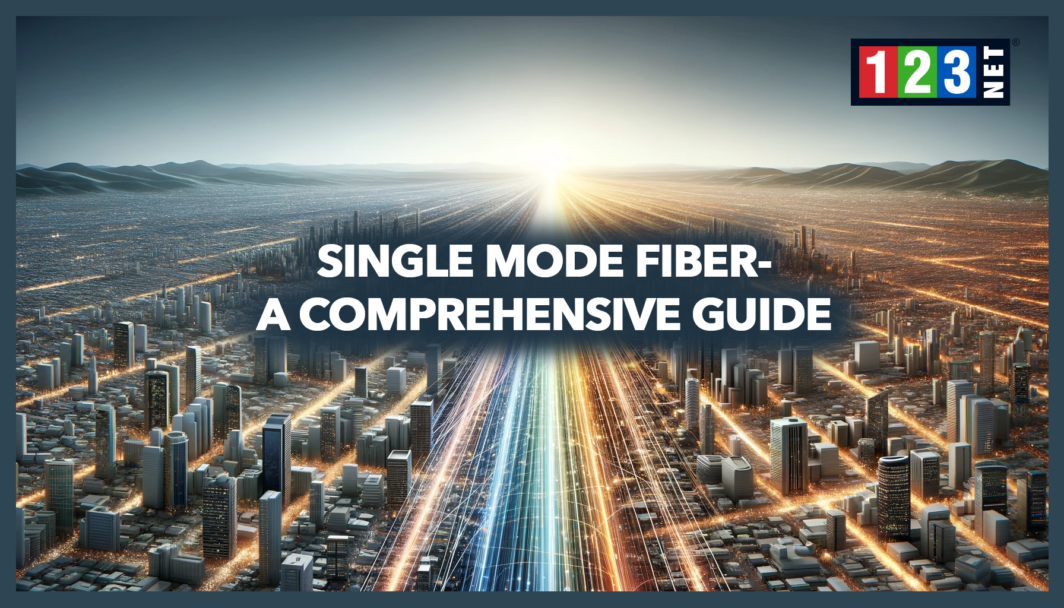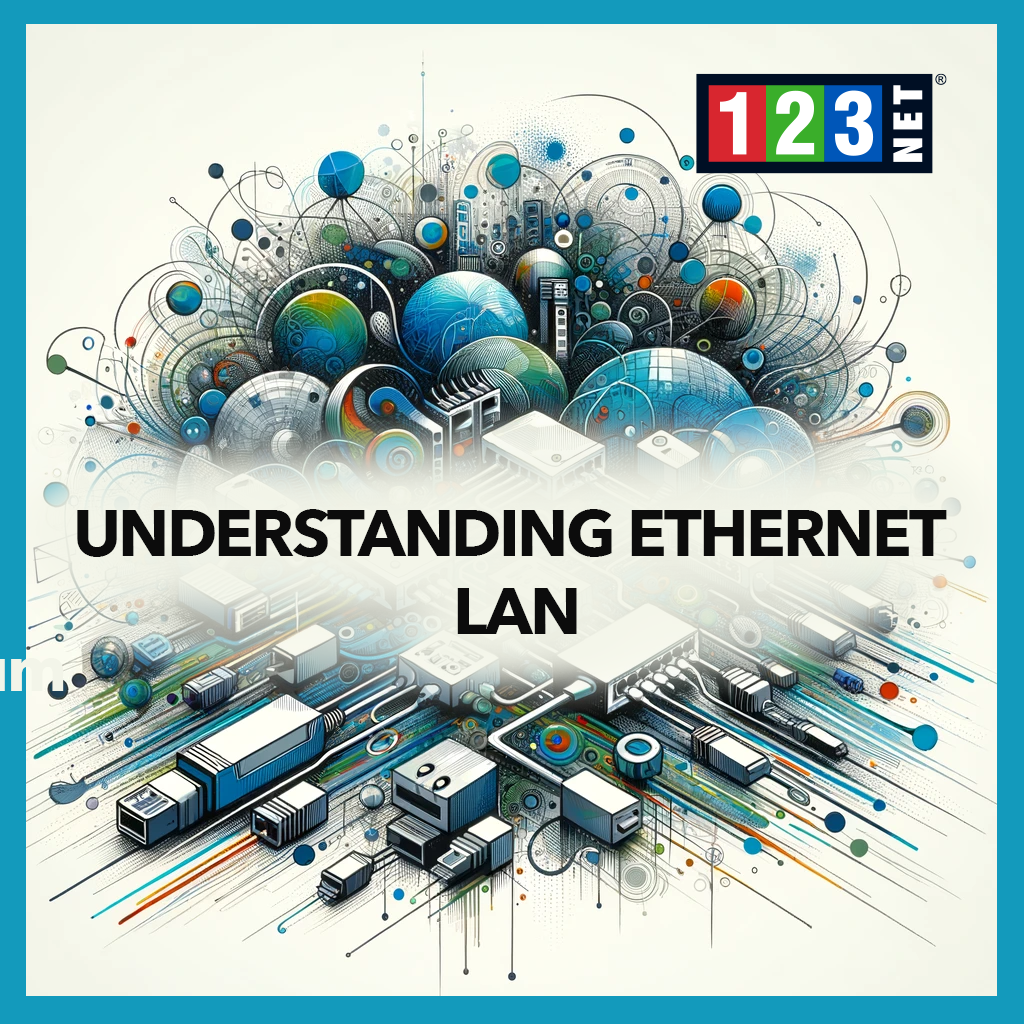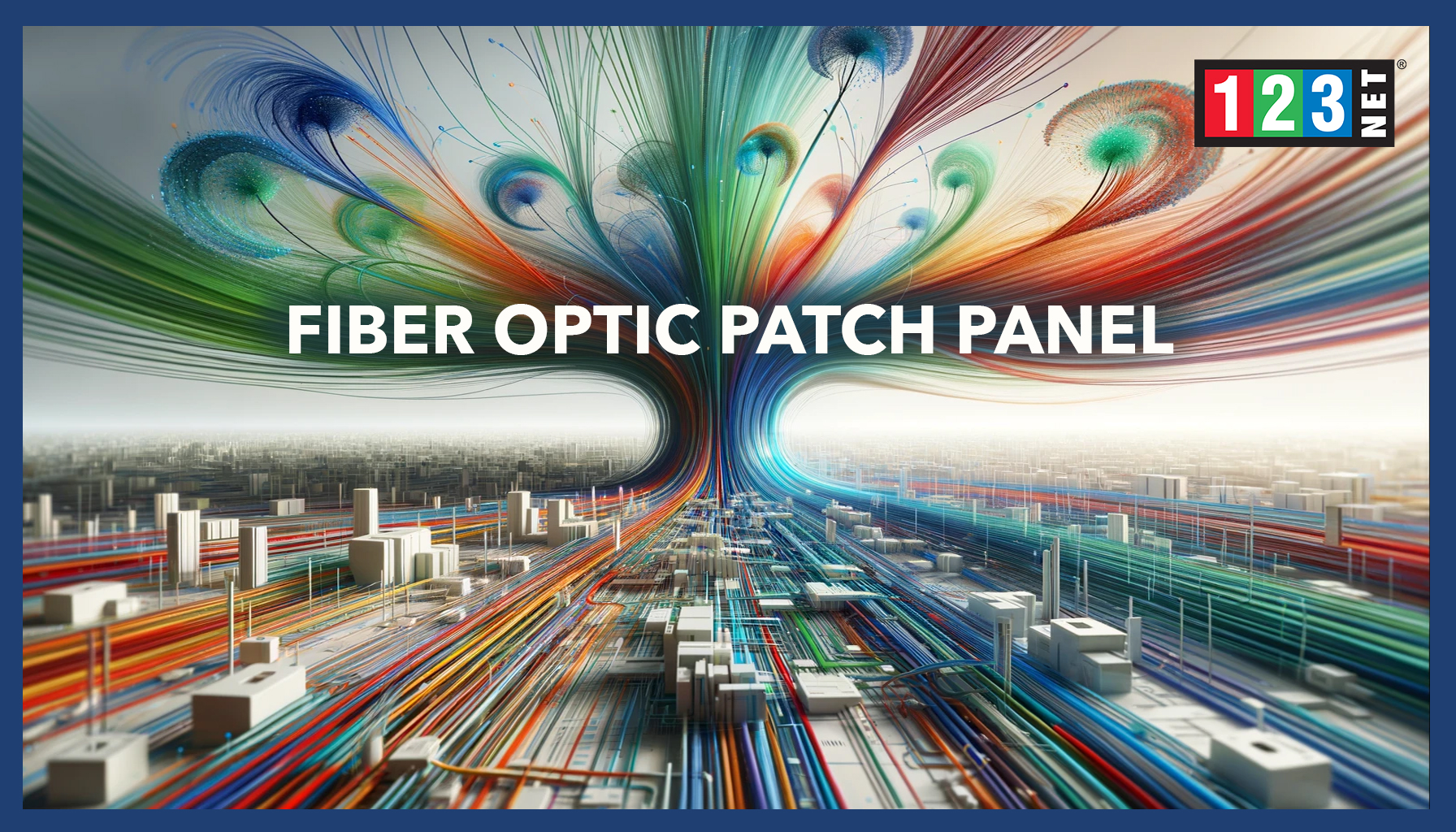
Introduction
Single Mode Fiber (SMF) is at the heart of modern communications, embodying the pinnacle of optical fiber technology. By allowing only a single light mode to propagate directly down the fiber, SMF provides a high-precision medium for transmitting data over long distances with minimal signal loss. This capability is paramount in an era where the demand for fast, reliable internet and communication services is ever-increasing.
The significance of single mode fiber in today’s digital world cannot be overstated. It is the backbone of the internet, data centers, and telecommunications, facilitating the rapid transmission of information across the globe. Its role in enabling high-speed, high-capacity networks makes it a critical infrastructure component for modern society.
What Is Single Mode Fiber?
Single mode fiber (SMF) fundamentally sets itself apart from multimode fiber through its capability to transmit light straight down its length without reflection off the fiber’s interior walls. This direct transmission path is made possible by SMF’s notably slender core, about 9 micrometers in width, which meticulously restricts light’s journey, thereby sharply reducing the scattering of data signals and mitigating signal attenuation over extended stretches.
This attribute is critical, as it permits SMF to convey data with higher efficiency and over lengths considerably surpassing those achievable with multimode fiber, establishing SMF as the go-to solution for applications demanding high data throughput across long distances. By facilitating the travel of light in a singular mode or wavelength, SMF virtually eliminates modal dispersion—a common challenge in multimode fibers where varied paths cause signal delays and distortion. This singular pathway ensures an unimpeded and robust transmission of data signals, significantly boosting signal integrity and the overall performance of communication systems. The superior design and operational capabilities of SMF underscore its importance and preference in sectors where data bandwidth and transmission fidelity over long distances are paramount, heralding a new era of connectivity with unparalleled efficiency and reliability.
Single Mode Fiber Types: OS1 vs OS2
In the domain of single mode fibers, the OS1 and OS2 variants stand out, each engineered for distinct operational settings. OS1 fibers find their niche within indoor environments, such as in the interconnected networks of data centers and the structured cabling systems of office buildings, where the transmission distances are relatively short. In contrast, OS2 fibers are crafted for resilience and performance in outdoor scenarios, serving as the backbone for undersea communications and long-distance telecom infrastructure, efficiently bridging vast distances with minimal loss of signal integrity.
The divergence between OS1 and OS2 fibers primarily rests on their structural and functional features. OS2 fibers boast an enhanced buffer coating, meticulously designed to confront and endure the rigors of external environmental conditions. This is including the demanding aspects of subterranean or aerial deployments. The choice between OS1 and OS2 fibers necessitates a careful evaluation of the intended application’s specific needs. This is ranging from the operational distance to the environmental exposure and the logistical complexities of the installation. This tailored approach ensures that the selected fiber type aligns perfectly with the technical and environmental prerequisites. Guaranteeing optimal performance and longevity in its deployment context.

Advantages
Long-Distance Signal Transmission
Single mode fiber (SMF) stands as a paragon within the optical fiber realm. It is outshining other types with its myriad advantages, primarily in long-distance signal transmission. Its most lauded benefit is the unparalleled capability to carry signals over vast distances with significantly lower attenuation. It’s a feat made possible by its finely tuned narrow core. This slender core is the linchpin in minimizing signal loss, thereby enabling data to traverse hundreds of kilometers seamlessly without necessitating signal regeneration. This is a critical factor in maintaining the integrity and speed of data transmission across sprawling networks.
Bandwidth Capacity
Beyond its distance-spanning prowess, SMF is celebrated for its exceptional bandwidth capacity. At the heart of this capability lies its unique construction, which facilitates a singular light path, effectively sidelining modal dispersion. Modal dispersion, a prevalent issue in multimode fibers characterized by multiple light paths. This is leading to signal delays, is virtually nonexistent in SMF. This elimination of data dispersion not only boosts the fiber’s efficiency but also significantly escalates data transmission rates. This is making SMF a cornerstone in the infrastructure of high-speed networks.
Higher Data Rates
Moreover, SMF’s inclination towards supporting higher data rates is pivotal. It adeptly accommodates gigabit and 10G Ethernet speeds, thus cementing its role as the backbone for modern, high-velocity networks. This attribute is indispensable in the current era, where the demand for rapid and reliable data transmission is in constant escalation. This is due to the exponential growth in data volume. The capacity to support such high-speed data transactions without compromising on quality or efficiency positions. SMF as an invaluable asset in the telecommunications and data communication sectors. It not only caters to the current demands but is also well-poised to meet the future needs of an increasingly connected and data-intensive world. This is marking it as a critical element in the evolution of global communication networks.
Disadvantages of Single Mode Fiber
Single mode fiber (SMF), while heralded for its superior transmission capabilities, is not without its drawbacks. Chief among these is the requirement for tighter tolerances in its manufacturing and operational handling. Which inevitably drives up the costs associated with SMF systems. The crux of this issue lies in its diminutive core diameter, necessitating highly precise connectors and sophisticated splicing techniques. Such precision elevates the initial outlay required for system setup. This is presenting a financial barrier that can deter adoption, especially in cost-sensitive scenarios.
Further complicating SMF’s deployment are the technological hurdles inherent in its fabrication and maintenance. The manufacturing process demands advanced equipment and a level of precision that can only be achieved through high-tech machinery and methodologies, increasing production costs. Additionally, the installation and ongoing maintenance of SMF infrastructure require the expertise of highly trained technicians. These skilled professionals must navigate the fiber’s nuances to ensure optimal performance, adding another layer of expense to its utilization. This combination of specialized equipment, expert personnel, and meticulous installation and maintenance processes underscores the complex and costly nature of implementing and sustaining single mode fiber networks, despite the unparalleled benefits they offer.
Applications of Single Mode Fiber Optic Cables
Technological Linchpin
Single mode fiber optic cables stand as a technological linchpin across an extensive array of industries. These bolstering the infrastructure of the modern digital world. Their pivotal role in telecommunications is unrivaled, serving as the structural foundation of the internet’s backbone. This application allows for the seamless, high-speed transmission of vast quantities of data across the globe. It’s a function critical to maintaining the internet’s ubiquity and efficacy. Data centers, the beating hearts of cloud computing and digital storage. It depends heavily on single mode fiber (SMF) for its exceptional bandwidth and minimal latency. This ensures efficient communication between servers and storage systems, even over substantial distances, thereby optimizing data flow and access speed.
Transmit High-Definition Video Signals
The broadcasting industry benefits from SMF’s ability to transmit high-definition video signals across lengthy spans without any loss in signal quality. It’s a must for live broadcasts and global feeds. In the medical realm, single mode fiber is instrumental within diagnostic imaging equipment. Where the stakes for precision and reliability couldn’t be higher. The clarity and dependability of SMF transmission support critical diagnostics and patient care protocols.
Military and Aerospace
In the spheres of military and aerospace, SMF is equally indispensable. It provides a secure, fail-proof medium for communications. Where reliability can mean the difference between success and failure, safety and peril. These applications highlight SMF’s versatility and robustness, ensuring secure and reliable data transmission even under the most demanding conditions.
Telecommunications use cases further illustrate SMF’s breadth, from linking cell towers with broader network infrastructure. To laying the undersea cables that knit the global internet fabric together. In data centers, SMF facilitates the interconnection of data storage systems and fosters high-speed links to external networks. This is underscoring its integral role in maintaining the pace and performance of digital exchanges. Through these varied applications, single mode fiber optic cables underscore their essential role in powering the backbone of our increasingly connected. Digital-centric world, proving indispensable across a spectrum of critical sectors.
FAQs
- Why choose single mode fiber over multimode fiber? A: Single mode fiber is preferred for applications requiring high bandwidth and long-distance transmission due to its lower attenuation and higher speed capabilities.
- What are the limitations of single mode fiber? A: The primary limitations include higher costs and the need for precise alignment and handling due to its small core diameter.




